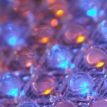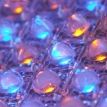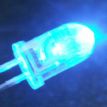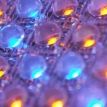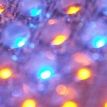|
(Acc. to Prof. P. Marx, Presentation TSB-Berlin, November 2012)
The sensitivity of the eye is centered at about 550nm (green light. green curve in left figure). However, there is another
sensor system inside the eye, the Circadiane System. This system has a maximum sensitivity at around 450nm (blue).
The Circadiane System controlls the biological clock (via Melatonin generation). Simply told, we get tired when
the sun sets and the light becomes more and more orange (reducing blue light).
If using more blueish light (e.g. cold white LEDs), you can circuimvent fatigue as proven becasue of
reduction of Melatonin production. Thus you can work more concentraded for longer time.
More informations here
Using our LED-Luminaires you can adjust the light colour you want and improve your
working convenience.
|

